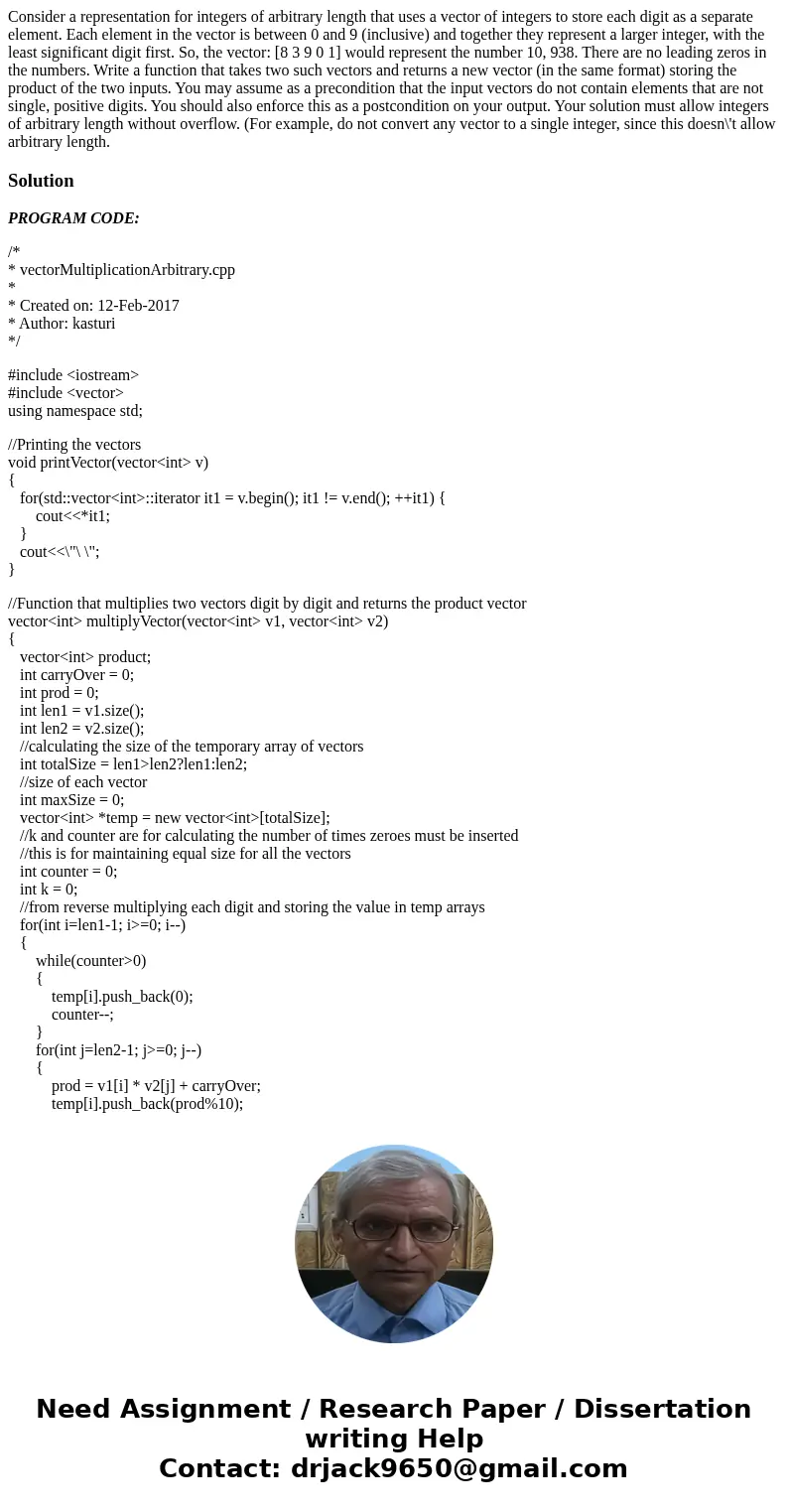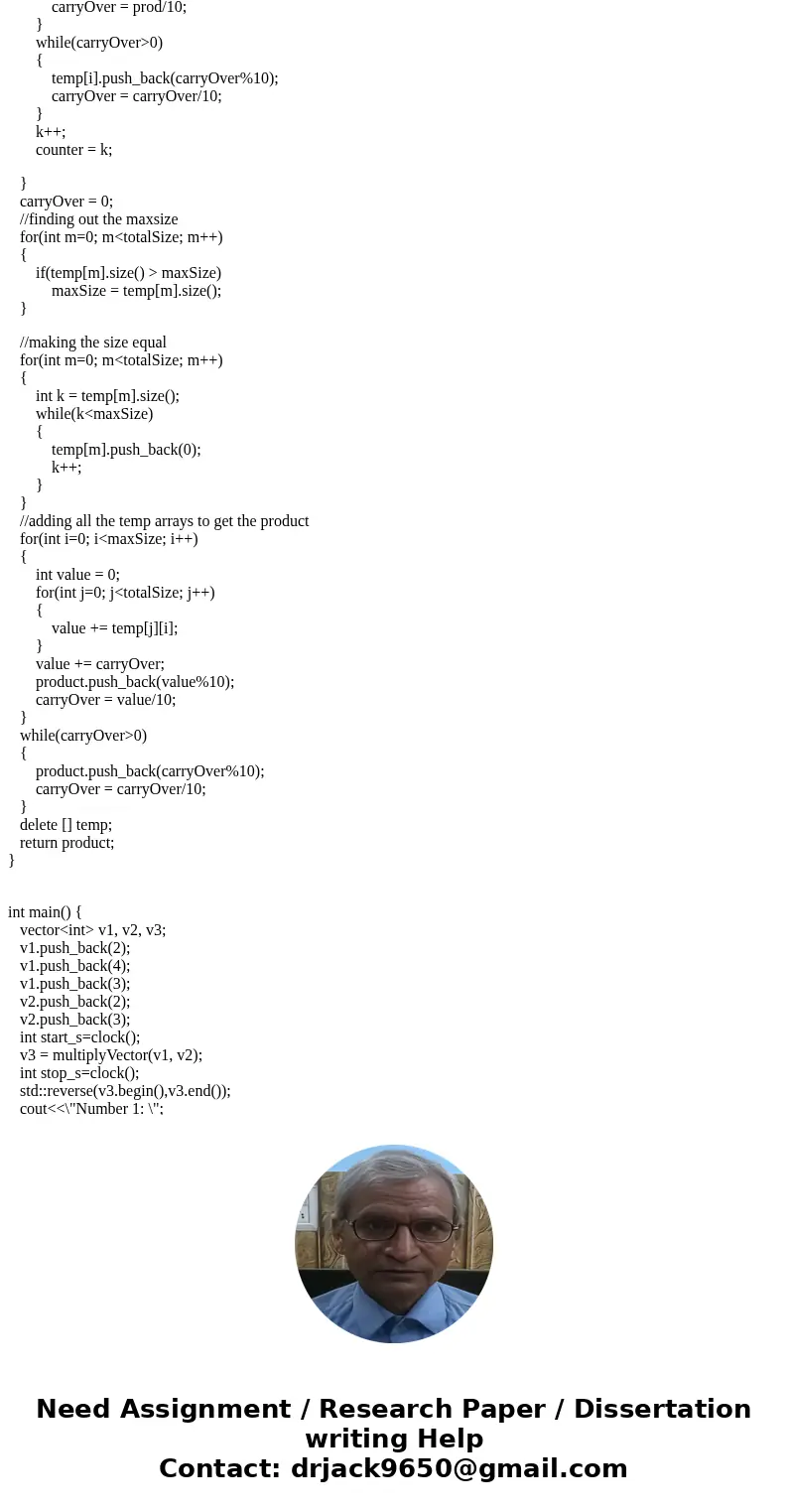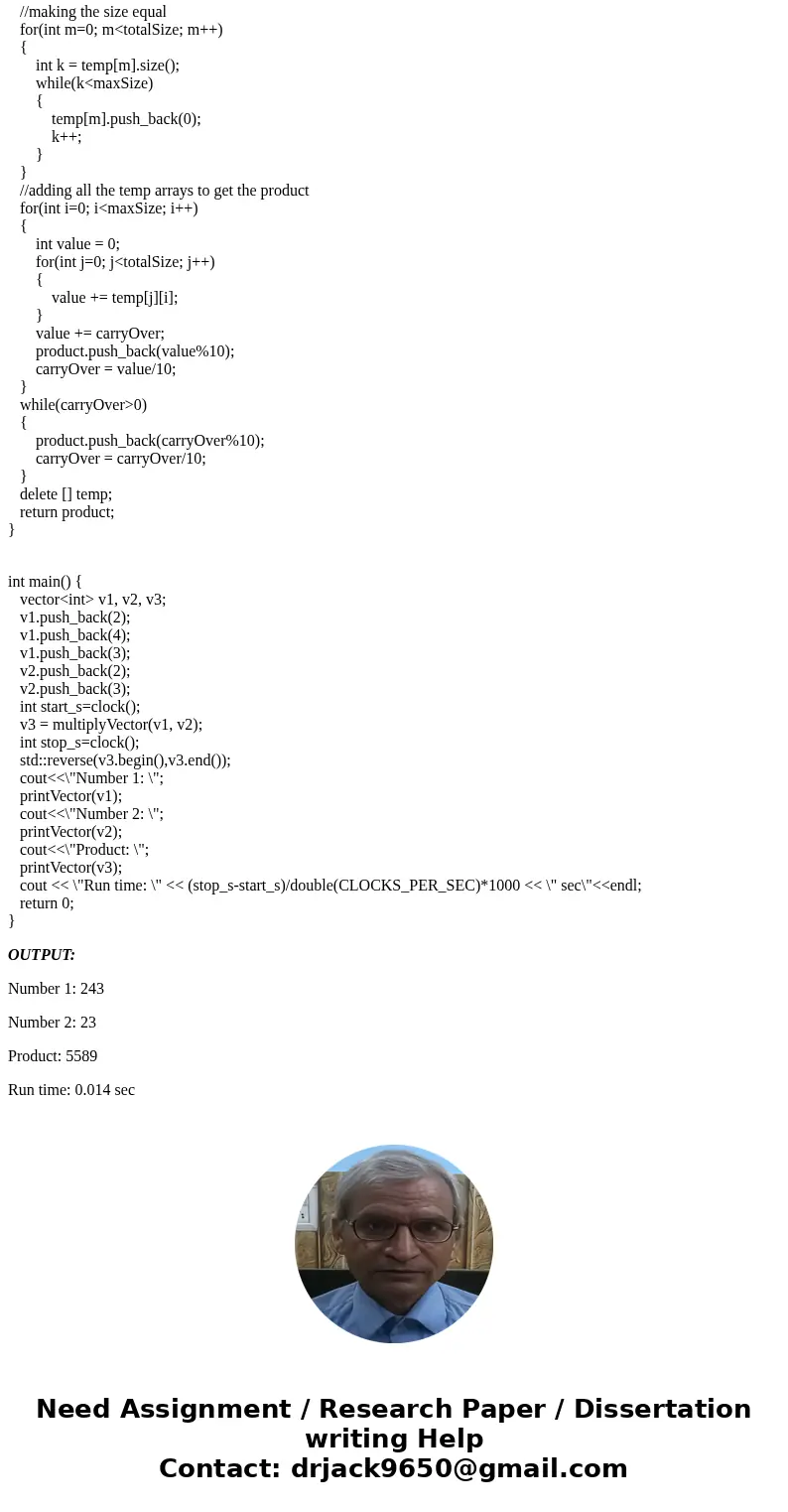Consider a representation for integers of arbitrary length t
Solution
PROGRAM CODE:
/*
* vectorMultiplicationArbitrary.cpp
*
* Created on: 12-Feb-2017
* Author: kasturi
*/
#include <iostream>
#include <vector>
using namespace std;
//Printing the vectors
void printVector(vector<int> v)
{
for(std::vector<int>::iterator it1 = v.begin(); it1 != v.end(); ++it1) {
cout<<*it1;
}
cout<<\"\ \";
}
//Function that multiplies two vectors digit by digit and returns the product vector
vector<int> multiplyVector(vector<int> v1, vector<int> v2)
{
vector<int> product;
int carryOver = 0;
int prod = 0;
int len1 = v1.size();
int len2 = v2.size();
//calculating the size of the temporary array of vectors
int totalSize = len1>len2?len1:len2;
//size of each vector
int maxSize = 0;
vector<int> *temp = new vector<int>[totalSize];
//k and counter are for calculating the number of times zeroes must be inserted
//this is for maintaining equal size for all the vectors
int counter = 0;
int k = 0;
//from reverse multiplying each digit and storing the value in temp arrays
for(int i=len1-1; i>=0; i--)
{
while(counter>0)
{
temp[i].push_back(0);
counter--;
}
for(int j=len2-1; j>=0; j--)
{
prod = v1[i] * v2[j] + carryOver;
temp[i].push_back(prod%10);
carryOver = prod/10;
}
while(carryOver>0)
{
temp[i].push_back(carryOver%10);
carryOver = carryOver/10;
}
k++;
counter = k;
}
carryOver = 0;
//finding out the maxsize
for(int m=0; m<totalSize; m++)
{
if(temp[m].size() > maxSize)
maxSize = temp[m].size();
}
//making the size equal
for(int m=0; m<totalSize; m++)
{
int k = temp[m].size();
while(k<maxSize)
{
temp[m].push_back(0);
k++;
}
}
//adding all the temp arrays to get the product
for(int i=0; i<maxSize; i++)
{
int value = 0;
for(int j=0; j<totalSize; j++)
{
value += temp[j][i];
}
value += carryOver;
product.push_back(value%10);
carryOver = value/10;
}
while(carryOver>0)
{
product.push_back(carryOver%10);
carryOver = carryOver/10;
}
delete [] temp;
return product;
}
int main() {
vector<int> v1, v2, v3;
v1.push_back(2);
v1.push_back(4);
v1.push_back(3);
v2.push_back(2);
v2.push_back(3);
int start_s=clock();
v3 = multiplyVector(v1, v2);
int stop_s=clock();
std::reverse(v3.begin(),v3.end());
cout<<\"Number 1: \";
printVector(v1);
cout<<\"Number 2: \";
printVector(v2);
cout<<\"Product: \";
printVector(v3);
cout << \"Run time: \" << (stop_s-start_s)/double(CLOCKS_PER_SEC)*1000 << \" sec\"<<endl;
return 0;
}
OUTPUT:
Number 1: 243
Number 2: 23
Product: 5589
Run time: 0.014 sec



 Homework Sourse
Homework Sourse